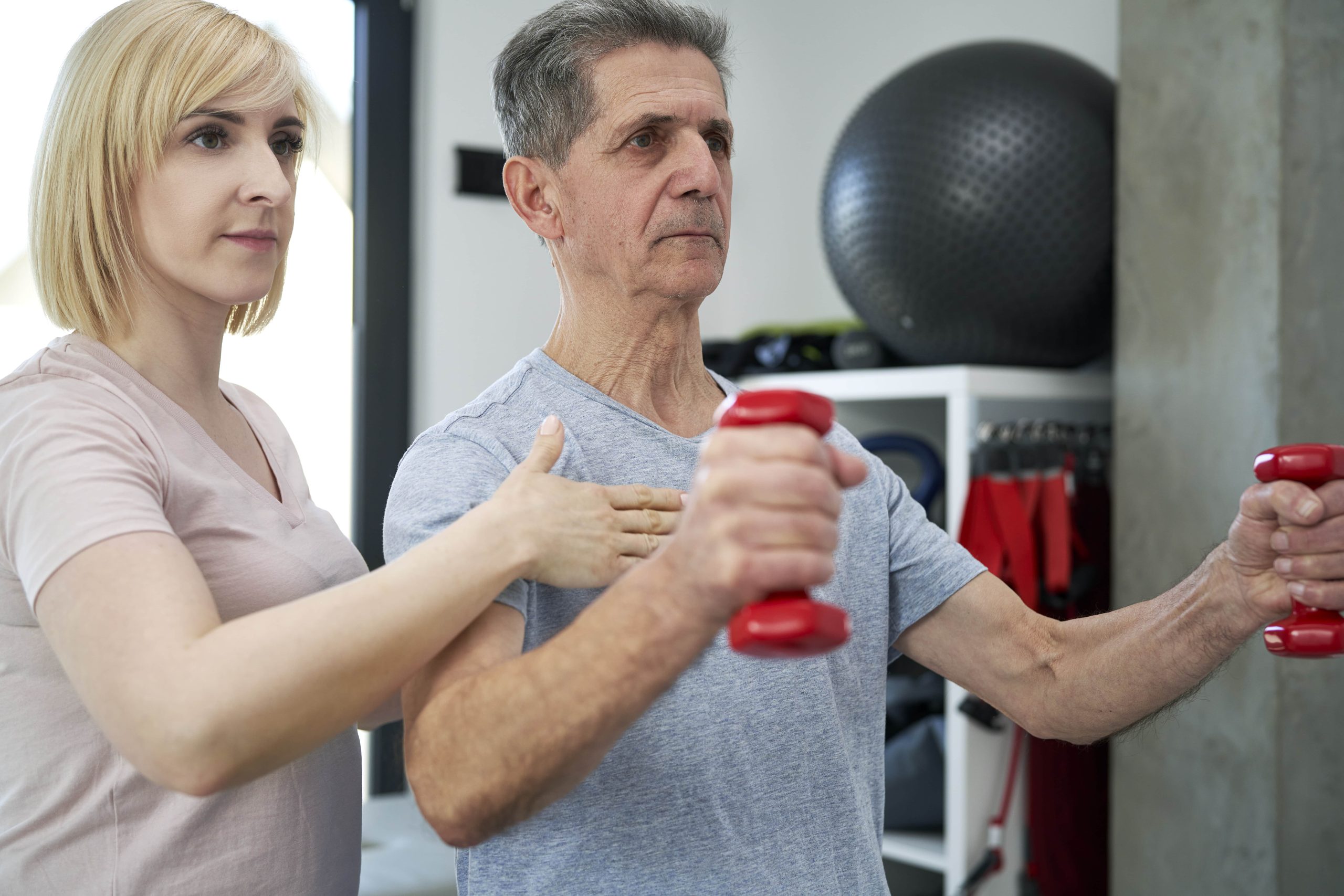Rotator Cuff Recovery: Essential Exercises & Therapy
After treating hundreds of patients with rotator cuff injuries over the years, I can tell you that the right exercise program makes all the difference in your recovery. Whether you’re dealing with a partial tear or recovering from surgery, understanding how to properly strengthen and stretch your shoulder will help you get back to the activities you love.
Your rotator cuff isn’t just one muscle—it’s actually four muscles working together to keep your shoulder stable and moving smoothly. Think of these muscles as a sleeve that wraps around your shoulder joint, keeping everything in place while you move your arm.
Understanding Your Rotator Cuff Injury
What Happens When Your Rotator Cuff Tears
A rotator cuff tear occurs when one or more of these four stabilizing muscles gets damaged. You might experience this as a sharp pain when reaching overhead, weakness when lifting your arm, or that annoying ache that keeps you awake at night.
The most common tears I see in my practice happen gradually from everyday wear and tear, especially if you do repetitive overhead motions. Sometimes a sudden injury—like catching yourself during a fall—can cause an acute tear.
Signs You’re Ready for Exercise
Before jumping into any exercise routine, your shoulder needs to be ready. You shouldn’t feel sharp pain when moving your arm, and any initial swelling should have gone down. If you’re still experiencing severe pain or can’t lift your arm at all, it’s too early for exercises.
Essential Shoulder Exercises for Rotator Cuff Rehabilitation
Phase 1: Range of Motion Exercises
Movement comes first, strength comes later. This is what I tell every patient. Your first goal is getting your shoulder moving again without pain.
Pendulum Swings
Stand beside a table and lean over slightly, letting your injured arm hang down. Gently swing your arm in small circles, letting gravity do the work. This exercise doesn’t strain your rotator cuff muscles but helps maintain joint mobility.
Start with 10 gentle swings in each direction, twice daily. Don’t force the movement—your arm should feel relaxed.
Cross-Body Stretch
Use your good arm to gently pull your injured arm across your chest. You should feel a mild stretch in the back of your shoulder. Hold for 15-30 seconds and repeat three times.
This stretch targets the posterior deltoid and helps restore flexibility for daily activities like reaching across your body.
Passive Internal and External Rotation
Using a yardstick or similar light rod, you can help your injured shoulder move without forcing it to work too hard. These exercises maintain rotation ability, which you’ll need for activities like reaching behind your back or combing your hair.
Phase 2: Strengthening Exercises
Once you can move your arm without pain, it’s time to rebuild strength. Start with resistance bands or very light weights (1-2 pounds maximum).
External Rotation with Resistance Band
This exercise targets the infraspinatus and teres minor—two of your rotator cuff muscles that are crucial for shoulder stability.
Keep your elbow tucked against your side and slowly rotate your arm away from your body against the resistance. The key is control, not speed. Aim for 3 sets of 8-10 repetitions.
Side-Lying External Rotation
Lie on your uninjured side with your injured arm on top. Bend your elbow to 90 degrees and rest it on your side. Holding a light weight, slowly rotate your arm toward the ceiling.
This exercise isolates the external rotators without putting stress on other shoulder muscles.
Scapular Strengthening
Your shoulder blade muscles work closely with your rotator cuff. Exercises like rows and reverse flies help create a stable base for your shoulder to move from.
Stand with your feet shoulder-width apart and pull a resistance band toward your chest, squeezing your shoulder blades together. This movement strengthens the middle trapezius and rhomboids.
The Role of Physical Therapy in Recovery
When to Start Professional Treatment
In my experience, most patients benefit from working with a physical therapist, especially if you’re not seeing improvement after 2-3 weeks of home exercises. A PT can assess your specific injury pattern and create a personalized program.
Physical therapists use specialized techniques like manual therapy and targeted strengthening that you can’t replicate at home. They also monitor your progress and adjust exercises as you heal.
What to Expect from PT Sessions
Your first few sessions will focus on reducing pain and restoring basic movement. As you progress, exercises become more challenging and sport-specific if you’re an athlete.
Most patients need 6-12 weeks of physical therapy, attending 2-3 times per week. Don’t get discouraged if progress feels slow—rotator cuff injuries take time to heal properly.
Sleep Positioning and Recovery Support
Why Sleep Position Matters
Here’s something many patients don’t realize: how you sleep directly affects your healing. Sleeping in the wrong position can undo the progress you’ve made during the day and significantly slow your recovery.
Traditional advice often recommends sleeping in a recliner, but this isn’t ideal for everyone. Recliners can cause back problems and don’t provide the specific support your shoulder needs to heal properly.
Clinical-Grade Positioning Solutions
After seeing too many patients struggle with poor sleep during recovery, I’ve started recommending specialized positioning devices like the SRS Restore You Therapeutic Support. This FDA-registered device maintains your shoulder in what we call the “Maximally Loose Packed Position”—the optimal position for healing.
What I like about clinical-grade positioning devices is that they allow you to sleep in your own bed while maintaining proper shoulder alignment all night. Studies show that patients using proper positioning support average 6-8 hours of sleep compared to just 2 hours in recliners.
The key is finding a solution that doesn’t require straps or complex setup, which can be difficult when you’re already dealing with limited mobility.
Lifestyle Modifications During Recovery
Daily Activity Adjustments
Recovery isn’t just about exercises—it’s about how you move throughout the day. Avoid reaching overhead, lifting heavy objects, or sleeping on your injured side until your doctor clears you for these activities.
Simple modifications like placing frequently used items at waist height and using your uninjured arm for carrying can prevent setbacks.
Gradual Return to Activities
I always tell patients to think of recovery as climbing a ladder, not jumping hurdles. Each week should bring small improvements, but rushing back to full activity often leads to re-injury.
Sports activities and heavy lifting should wait until you’ve regained full range of motion and strength, typically 12-16 weeks after injury or surgery.
When to Seek Medical Care
Red Flags That Need Immediate Attention
Contact your doctor immediately if you experience sudden, severe pain, numbness or tingling in your arm, or if your symptoms get significantly worse instead of better.
Progressive weakness or inability to lift your arm could indicate a larger tear that might need surgical intervention.
Follow-Up Care Timeline
Plan to check in with your healthcare provider at 2 weeks, 6 weeks, and 3 months after starting treatment. These visits help ensure you’re healing properly and progressing as expected.
If you’re not seeing improvement after 6-8 weeks of conservative treatment, your doctor might recommend imaging studies or consider other treatment options.
Key Takeaways for Successful Recovery
Your rotator cuff tear can heal successfully with the right combination of exercises, proper sleep positioning, and patience. Remember that healing takes time—rushing the process often leads to setbacks.
Focus on pain-free movement first, then gradually build strength. Use proper positioning support during sleep to maximize your body’s natural healing processes. Most importantly, work with your healthcare team to ensure you’re on the right track.
Recovery from a rotator cuff tear is a marathon, not a sprint. With consistent effort and the right approach, you can return to the activities you enjoy pain-free.
Medical Disclaimer: This information is for educational purposes only and should not replace professional medical advice. Always consult with your healthcare provider before starting any exercise program or treatment plan. Individual recovery times and treatment needs may vary based on the severity of your injury and your overall health status.
Chat controls
Sonnet 4
Share the Post:
Related Recovery Posts
Post-Surgery Sleep: Your Recovery Rest Guide
Your shoulder just underwent surgery, and you’re probably wondering how to get back...

